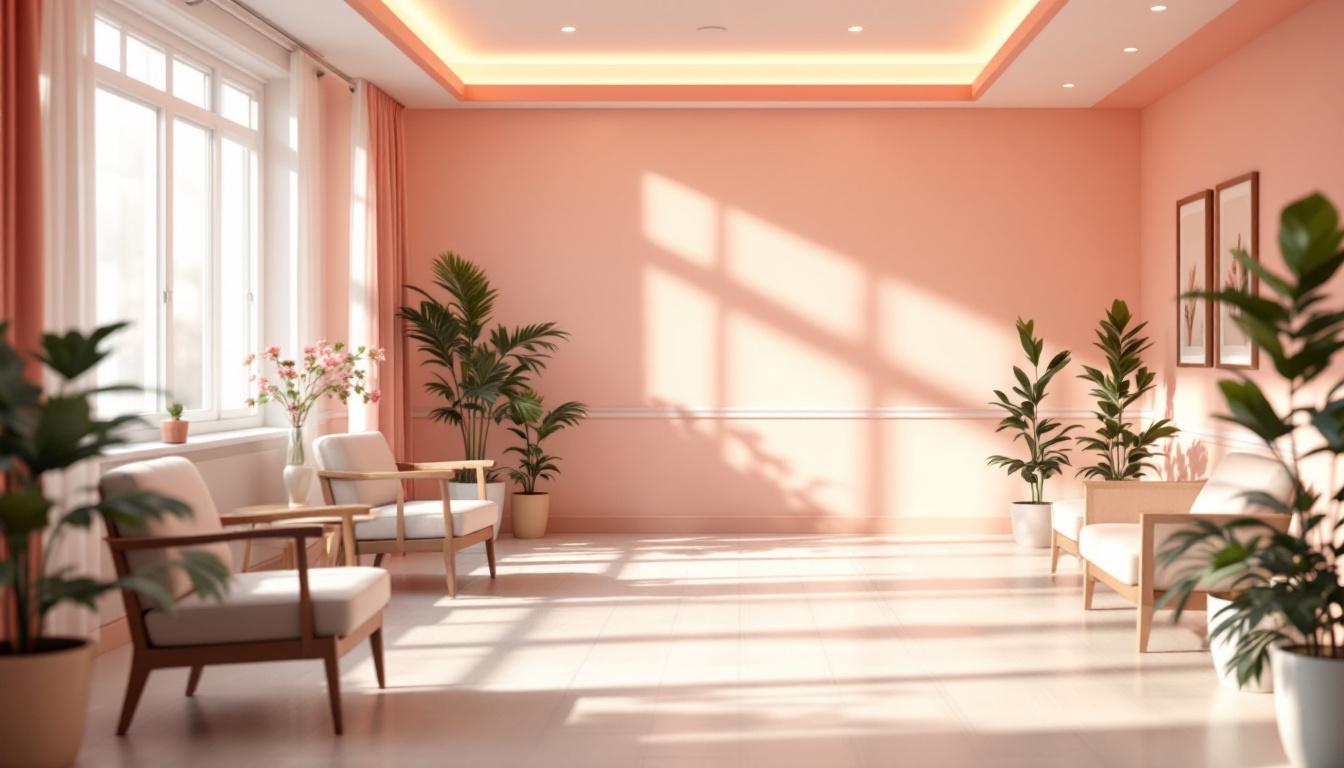The Importance of Creating a Comfortable Sleeping Environment in Hospice Care
July 14, 2025
Enhancing Comfort and Well-Being in Hospice Settings

The Significance of Sleep Environment in End-of-Life Care
Creating a tranquil and supportive environment in hospice care is essential for ensuring dignity, comfort, and quality of life for patients nearing the end of life. This involves careful attention to physical comfort, emotional support, and environmental factors that promote restful sleep—an often overlooked yet critical component of holistic hospice care.
Foundations of Comfort in Hospice Care

Why is comfort important in end-of-life care?
Comfort care is an essential part of medical care at the end of life. It helps or soothes a person who is dying, aiming to prevent or relieve suffering and improve quality of life while respecting the person's wishes. Creating a peaceful environment can significantly ease physical symptoms like pain, breathing difficulties, and fatigue. Additionally, emotional and spiritual comfort contribute to a sense of dignity and serenity, helping patients find peace during their final days.
What are the core components of hospice care?
Hospice care revolves around three main elements: compassion, comfort, and communication. Compassion involves providing empathetic psychological and emotional support, ensuring that patients feel cared for and supported. Physical comfort focuses on effective pain management and alleviation of other symptoms such as skin irritation, digestive issues, and breathing problems. Communication is integral for keeping open lines between healthcare providers, patients, and families, helping everyone stay informed and involved about care plans and emotional needs.
How does a holistic approach enhance comfort?
A holistic approach in hospice care considers not just physical symptoms but also emotional, spiritual, and environmental factors. Physical comfort involves tailored pain management, using opioids carefully to manage symptoms like pain and dyspnea while minimizing side effects like drowsiness.
Emotional and spiritual support are vital for addressing feelings of depression, anxiety, or spiritual distress. This might involve counseling, spiritual practices, or simply a calming presence. An environment that feels safe, serene, and personalized—featuring natural light, soothing colors, and comforting items—further enhances well-being.
Hospice providers collaborate closely with families and caregivers to create spaces that promote peace, using elements like gentle lighting, natural views, soft textures, and calming sounds. These environmental modifications support restful sleep and reduce stress, contributing to a dignified and comfortable end-of-life experience.
Promoting peacefulness through environment and care practices
Hospice care settings emphasize the importance of an environment designed to foster serenity. This includes ensuring adequate space for mobility and medical equipment, reducing clutter, and customizing the space with personal items. Light management using blackout curtains or night lights, sound control with white noise machines, and the use of sensory calming techniques help establish a soothing atmosphere.
The holistic care model recognizes that comfort extends beyond physical symptoms. Supporting emotional and spiritual needs, along with creating a peaceful environment, enables patients to approach the end of life with dignity, tranquility, and a sense of control. Professional hospice teams are trained to guide families through this process, ensuring the final journey is as peaceful and comforting as possible.
Physical Comfort and Safety Measures
 Creating a truly supportive hospice environment requires meticulous attention to physical comfort and safety. Managing pain is a primary focus, with opioid medications often used to alleviate discomfort. These medications can sometimes cause drowsiness, so healthcare providers may tailor dosage or consider alternative options to balance pain relief and alertness. Addressing breathing difficulties might involve positional adjustments or medication, while skin irritation is minimized through regular skin care and barrier moisturizers.
Creating a truly supportive hospice environment requires meticulous attention to physical comfort and safety. Managing pain is a primary focus, with opioid medications often used to alleviate discomfort. These medications can sometimes cause drowsiness, so healthcare providers may tailor dosage or consider alternative options to balance pain relief and alertness. Addressing breathing difficulties might involve positional adjustments or medication, while skin irritation is minimized through regular skin care and barrier moisturizers.
Digestive problems like nausea, vomiting, or constipation are managed with appropriate medications and nutritional support, stressing the importance of avoiding forced feeding that could cause distress. Temperature sensitivity also needs monitoring; adjusting blankets or room temperature helps prevent discomfort.
Hospice patients typically spend most of their time in bed, making the quality and safety of hospital beds crucial. These beds, like the SonderCare model with mobility casters, can be moved easily to different rooms, providing flexibility and convenience. The room should be spacious enough to accommodate mobility aids such as walkers or wheelchairs and free of clutter to prevent falls.
Environmental safety features are vital—installing grab bars near bathrooms, non-slip rugs, and night lights or motion sensors enhances safety. Noise and light controls, like blackout curtains or white noise machines, support better sleep and reduce anxiety. Comfortable furniture, soft lighting, and soothing sensory elements such as gentle music or aromatherapy contribute to a calming atmosphere.
Overall, safeguarding physical comfort and safety involves a combination of medical management, environmental adjustments, and personalized touches. These measures create a secure, peaceful setting that respects the patient’s dignity and supports their well-being during this sensitive phase of life.
Environmental Modifications for Better Sleep Quality
What are effective modifications to improve sleep in hospice?
Creating a peaceful sleep environment is essential for hospice patients, helping them rest comfortably and reducing stress. Several practical adjustments can significantly improve sleep quality.
One of the most effective measures is controlling room lighting. Using blackout curtains can block out bright lights and support natural circadian rhythms, encouraging better sleep patterns. Additionally, installing night lights or low-level motion-activated lighting in hallways ensures safety without disturbing restful sleep.
Soundproofing the room helps minimize noise that can interrupt sleep cycles. Employing sound machines, white noise generators, or soft calming music can mask environmental sounds, providing a serene atmosphere conducive to rest.
Incorporating natural elements such as plants or calming scenery can promote relaxation and a sense of tranquility. The room layout should maximize privacy and comfort; positioning the bed away from doorways or windows helps reduce disturbances.
Adequate space for medical equipment, mobility aids, and personal belongings is crucial for safety and convenience. Personalizing the room with familiar objects, family photos, or soothing colors enhances a sense of familiarity and peace.
Relaxation techniques like gentle massage, calming scents, or soft textures further support restful sleep. Establishing a consistent bedtime routine, including relaxing activities and avoiding electronic devices before sleep, can reinforce healthy sleep habits.
Overall, creating an environment that combines light, sound, natural elements, and personalized touches helps address sleep disturbances, contributing to improved comfort and quality of life for hospice patients.
| Modification | Description | Benefits |
|---|---|---|
| Blackout curtains | Block excessive light | Support circadian rhythms, promote sleep |
| Soundproofing & white noise | Minimize disruptive sounds | Reduce wake-ups & anxiety |
| Natural elements | Incorporate plants, scenic views | Enhance relaxation |
| Bed placement | Position for privacy & minimal disturbance | Improve comfort |
| Room personalization | Use familiar items & calming colors | Foster peace & familiarity |
This combination of adjustments creates a supportive environment for restful sleep, addressing common challenges faced by hospice patients.
Role of Environmental Design in Holistic End-of-Life Care

What is the historical perspective on environment in healing and hospice settings?
The significance of environment in healthcare has been recognized since ancient times. The Asklipieion of Ancient Greece was designed as a healing sanctuary, emphasizing natural surroundings for recovery. Florence Nightingale, a pioneer in modern nursing, highlighted the importance of providing patients with access to fresh air, natural light, scenic views, and a healthy diet to foster healing. These early insights laid the foundation for contemporary understanding that a healing environment significantly influences patient outcomes.
How does environment design impact patient experience and outcomes?
Research underscores that the physical setting of hospitals and hospice facilities directly affects patients' care experience. Factors like noise levels, visibility of natural scenery, and availability of calming stimuli such as indoor plants can reduce anxiety and promote relaxation. Natural light and quiet spaces have been shown to improve sleep quality, decrease stress, and enhance overall well-being. Proper design not only fosters comfort but can also support quicker recovery, manage pain better, and provide a sense of safety and dignity.
How can hospice environments incorporate holistic, patient-centered design principles?
Implementing thoughtful design features tailored to individual needs can create more peaceful, supportive hospice settings. Using natural lighting, incorporating views of nature, and establishing quiet, private areas help address emotional and spiritual needs. Personalizable spaces allow patients and families to feel more at home, promoting dignity and comfort during this sensitive time. Such environments emphasize a holistic approach, integrating physical comfort with emotional and spiritual support to improve overall quality of life at the end of life.
| Element | Impact on Patient Care | Example Application |
|---|---|---|
| Natural Light | Enhances mood, supports circadian rhythms | Large windows, skylights, daylight simulation |
| Views of Nature | Reduces stress, promotes relaxation | Gardens, outdoor scenery visible from rooms |
| Quiet, Private Spaces | Provides emotional safety, reduces anxiety | Soundproof rooms, secluded areas |
| Personalization | Supports dignity, emotional comfort | Allowing personal items and decor |
| Soothing Sounds & Aromas | Creates calming atmosphere | Soft music, gentle scents |
Designing hospice environments with these principles benefits both patients and caregivers. It champions a holistic, human-centered approach that aligns with the ultimate goal of providing comfort, serenity, and dignity at the end of life.
Supporting Emotional and Spiritual Well-Being Through Environment
 Creating a peaceful hospice environment extends beyond physical comfort; it also greatly influences emotional and spiritual well-being. An environment that fosters emotional stability and spiritual peace can significantly enhance the quality of life for hospice patients.
Creating a peaceful hospice environment extends beyond physical comfort; it also greatly influences emotional and spiritual well-being. An environment that fosters emotional stability and spiritual peace can significantly enhance the quality of life for hospice patients.
To support emotional health, providing gentle, empathetic communication and emotional support is essential. This includes managing depression and anxiety through counseling or appropriate medication, and creating a space that feels safe and nurturing. Having personal items or comforting decorations can help patients feel more at home and less isolated.
Facilitating spiritual practices and providing access to religious resources enable patients to find comfort, purpose, and peace during their final days. Whether through prayer, meditation, or spiritual counseling, these activities can help individuals connect with their faith or personal beliefs.
The physical environment plays a vital role in these aspects. Elements like soft lighting, soothing sounds, and natural light contribute to a calming atmosphere. Incorporating sensory elements such as gentle music, soft textures, and pleasant aromas can promote relaxation and ensure the surroundings foster peace.
Open communication and respect for patient dignity are fundamental. An environment that encourages conversations, respects privacy, and honors individual preferences helps patients maintain their sense of autonomy and self-worth. Simple adjustments, like private spaces for prayer or reflection and accessible setups that accommodate emotional needs, support this goal.
Ultimately, integrating these physical and emotional elements creates a holistic space that nurtures both the body and spirit, helping patients find serenity and acceptance in their final journey.
Overnight Care and Its Role in Enhancing Sleep Quality

What is the significance of overnight care in hospice?
Overnight hospice care plays a vital role in providing continuous support and comfort during the night hours. It ensures that patients receive necessary medical assistance, emotional reassurance, and safety measures around the clock. This type of care helps maintain dignity and peace in the final days, giving families confidence that their loved ones are well cared for even when they sleep.
Having dedicated overnight caregivers means that patients can rest more peacefully, knowing someone is attentive to their needs. It also offers families relief from the burden of night-time vigilance, enabling them to rest and preserve their well-being.
How do overnight caregivers enhance patient safety and sleep?
Overnight caregivers support patients by assisting with tasks such as medication administration, repositioning, and providing companionship. They are trained to respond swiftly in emergencies, ensuring safety at all times.
By managing common sleep disruptions—like noise or discomfort—these caregivers contribute to a calmer environment. Their presence helps prevent accidents, such as falls or choking, which can occur when patients are alone. As a result, patients often experience more restful sleep, which enhances their overall comfort and helps to reduce episodes of agitation or distress.
What challenges exist with overnight care and how can they be addressed?
Challenges include sleep disruptions for both patients and caregivers, leading to fatigue and stress. Sleep disturbances are common in hospice patients due to illness or medication effects.
To address these issues, policy support and organizational strategies are crucial. This can include providing training for caregivers, ensuring adequate staffing, and developing support networks to prevent burnout. Supporting caregivers’ mental and physical health is essential to sustain high-quality overnight care.
Additionally, creating a supportive environment through environmental modifications—such as soft lighting, noise reduction, and custom sleep setups—can improve sleep quality and overall experience.
| Aspect | Details | Additional Information |
|---|---|---|
| Patient safety | 24/7 monitoring, emergency response, medication help | Critical for preventing accidents and distress |
| Sleep quality | Comfort measures, soothing environment, routine | Helps improve sleep patterns and restfulness |
| Caregiver support | Training, policy advocacy, mental health assistance | Aims to reduce burnout and sustain care quality |
| Environmental adjustments | Noise management, lighting control, privacy enhancements | Contributes to peaceful sleep and comfort |
Incorporating these elements ensures that overnight hospice care effectively promotes restful sleep, safety, and emotional well-being for both patients and caregivers.
Creating a Sanctuary for Peaceful End-of-Life Days
Ultimately, designing a hospice environment that prioritizes comfort and restful sleep involves integrating physical safety, personalized touches, environmental modifications, and emotional support. Incorporating natural light, reducing noise, providing soft textures, and supporting spiritual and emotional needs create a sanctuary where patients can experience dignity, tranquility, and essential rest in their final days, thereby significantly improving their quality of life.
References
- Creating a Comfortable and Peaceful Environment for ...
- Balancing Comfort and Sleep
- Providing Care and Comfort at the End of Life
- Creating a Peaceful Environment for Hospice Care at Home
- How to Help Your Loved One Sleep Better at Night
- Understanding the Importance of Overnight Care for Hospice
- voiced bedside experiences of hospice and end-of-life staff ...
- How Do You Prepare Your Bedroom For Hospice Care?



































































































